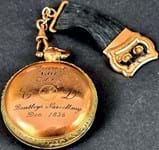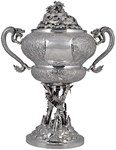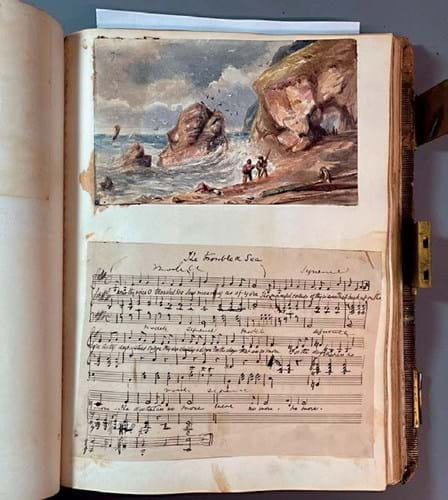
The ‘commonplace book’ of songwriter Claribel (sold with a copy of Thoughts, Verses and Songs by Claribel), £2700 at John Taylors.
Claribel was the pseudonym of Charlotte Alington Pye Barnard (1830-69), the precociously talented daughter of a Louth solicitor who became one of the most successful female songwriters of the 19th century.
Married to a clergyman and living variously in Louth, London and Kirmington (Lincolnshire), she wrote over 100 songs that were performed by all of the popular singers of the day both here and in the US. At one point she had 45 songs in the music publisher Boosey & Co’s list of popular songs (five times as many as Arthur Sullivan of Gilbert and Sullivan fame).
Within the space of just 10 years she amassed a fortune of £30,000 - all of which was stolen by her father.

The ‘commonplace book’ of songwriter Claribel (sold with a copy of Thoughts, Verses and Songs by Claribel), £2700 at John Taylors.
James Laverack of Louth auction house John Taylors (18% buyer’s premium), which offered the collection, said: “The highly respected solicitor Henry Alington Pye, a one-time county treasurer, turned out to have been systematically embezzling money from the county, his clients and his own daughter. The total amount involved was in excess of £100,000 (£15m in today’s money).
“Pye fled to Belgium in the summer of 1868 to escape justice together with his wealthy wife, a daughter of the Earl of Buckinghamshire. Rather surprisingly, Charlotte and her husband followed shortly afterwards.”
Laverack added: “It sounds crazy until you consider the circumstances. Her father had not only cleaned her out but he had destroyed the family’s social standing. Overnight Claribel, the songwriter with a vast circle of friends in the world of the arts, literature and high society, became Charlotte the daughter of the notorious swindler Henry Pye. Nobody wanted to know her.”
Financial disaster became tragedy. Returning to England for a break a few months later she became ill and died of typhoid soon after landing, aged 38. She was buried in Dover.
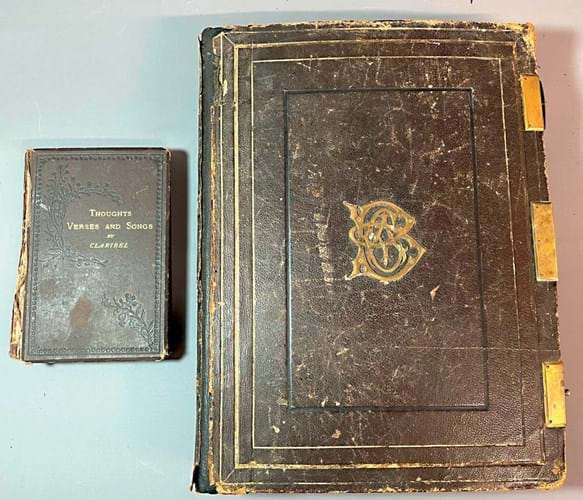
The ‘commonplace book’ of songwriter Claribel (sold with a copy of Thoughts, Verses and Songs by Claribel), £2700 at John Taylors.
Family descent
The Claribel collection that went under the hammer in three lots at John Taylors on March 12 had been consigned by a fourth-generation family descendant (of the husband of Charlotte Alington Barnard, Charles Cary Barnard, who remarried after her death) living on the Maltese island of Gozo. With no family to pass it on to, they decided to send it home for auction.
It included a large oil painting of Charlotte as a young child by an unknown artist.
Another lot offered a first edition copy of Thoughts, Verses and Songs by Claribel, published posthumously by James Nesbit & Co in 1877, and Claribel’s ‘commonplace book’, a volume somewhere between diary, journal, scrapbook and notebook, packed with an extensive array of the letters and signatures of some of the most famous people in Victorian England.
Just one of the pages features the autographs of Thackeray, Tennyson, Holman Hunt and Edward Lear, together with a note from the writer and politician Edward Bulwer-Lytton expressing pleasure at their meeting.
Other entries include observations, music and songs in Claribel’s hand, correspondence and fan mail plus numerous watercolour drawings (including a Lincolnshire coast view that has had a beached boat added by John Christian-Shetky, marine painter to Queen Victoria).
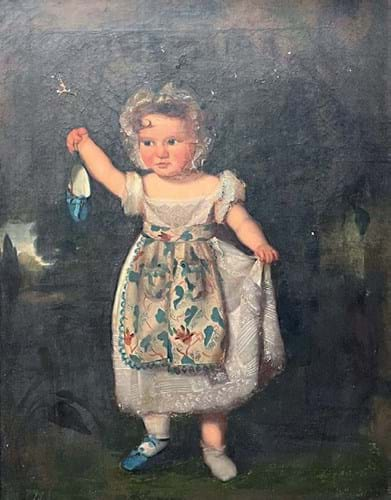
The large (frame size 3ft 9in x 3ft 1in/1.15m x 95cm) oil painting of Claribel as a child, £1200 at John Taylors.
The c.1830s painting sold within estimate at £1200; the ‘commonplace book’ and Thoughts, Verses and Songs by Claribel made £2700 (estimate £800-1200); and a c.1860s hand-tinted photographic portrait on opaque glass of Claribel sold on low estimate at £100.
Laverack added: “Bids came in via the phone, online (including America) and in the room; finally all three lots sold to Louth Museum who were in attendance.”


